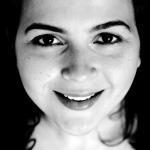- 29 July 2016
- 1825 defa okundu.
Alvisi Kirimoto + Partners Together With Renzo Piano Inaugurated Piazza Faber in Sardinia
A unique installation in the main square in Tempio Pausania, Sardinia, was inaugurated recently. It is dedicated to Italian singer-songwriter Fabrizio De André. A series of colored sails fluctuate in the sky, in the center of this small town. The light and ever-changing installation is designed by Alvisi Kirimoto + Partners together with Renzo Piano, who conceived the early idea.
Born from an idea by Renzo Piano and designed by Alvisi Kirimoto + Partners, the recently-completed project for the central market piazza in Tempio Pausania celebrates the light and the colors of the landscape in Gallura (Sardinia).
The installation is dedicated to Italian singer-songwriter Fabrizio De André who chose this part of Sardinia as his retreat. The idea for this extraordinary homage was born out of the friendship that tied Renzo Piano to Fabrizio De André: it is meant not only to celebrate one of the most sensitive interpreters of human nature, often observed with the eyes of marginalized people, but also to highlight the importance of small towns in Italy, such as Tempio Pausania.
The inauguration took place on Thursday July 21 at 9 pm. It ended with a public celebration that saw the participation of Dori Ghezzi, singer and wife of Fabrizio De André; the architects Massimo Alvisi, Junko Kirimoto and Renzo Piano. Studio Azzurro designed a special video-installation, titled “I Tarocchi” (after a famous song by De André) that was presented inside the ex-market building.
Narrow, irregular street lead to the piazza, surrounded by historical buildings mostly from the 1700s, built with granite blocks, and paved with gray granite, and offer variable glimpses onto the open space. Here the project developed by the architects Massimo Alvisi and Junko Kirimoto, and conceived in continuity with the original idea by architect Renzo Piano, consists in a series of 12 suspended elements whose background is the screen of stone buildings and the market arcade. Colored fabric sails fluctuate in the sky, as if carried by the wind and finally resting, in a sort of unstable balance, on a web made of wires stretched out between the buildings. The idea of architect Renzo Piano to make a “spiderweb” that could capture the colors of light is hence translated into a light game made of wires and cloths that do not touch the piazza but give it shadow and color. When the sails are closed, “12 colored pencils” (the reference here is to a great passion Fabrizio De André had for Faber-Castell crayons, hence the peculiar nickname his friends gave him) seem to be suspended between the granite walls.
This intervention, with its lightness and its untamed vitality, allowed us to relate ourselves once again with small urban centers. Starting from Renzo Piano’s idea to ‘capture the rays of light and its colors’, we moved the action up high, above the piazza, thus forcing passers-by to look beyond the roofs, to deal with the gray buildings and the color of the sky, to transcend the angular margins of the area, says architect Massimo Alvisi.
The construction for this installation consisted in the arrangement of a net of steel cables anchored to the thick granite walls of the surrounding buildings. The net creates a series of suspended triangles, each vertex the starting point for other rods that form 12 triangles of varying dimensions. The fabric triangles can be rolled up thanks to a motorized system similar to the ones employed for sailing. The device allows two different kinds of configurations. The first one, with open sails, produces triangles of shadows in the piazza; the second one, with closed sails, displays an intricate system of cables, a sort of spiderweb made of mainrods, scrolling cables and tensioning elements. The open-sail configuration is also meant to host projections.

